Menus
- Uncomplicated and easy for beginners
- Two “longer” and “shorter” benches are available for an additional charge
- More neutral and light-footed than almost any other low rider
- Lean angle is adequate
- The cockpit also comes from the ER-6
- Still more sportsmanship at heart than chopper boom
- Technical data Kawasaki Vulcan S
- The Vulcan S – a good basis for conversions.
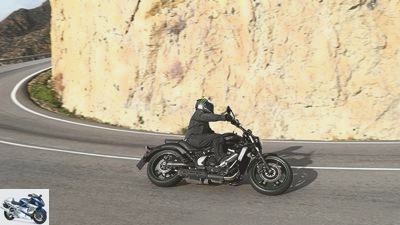
Kawasaki
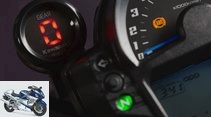


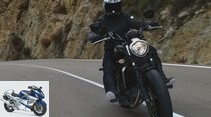
29 photos

Kawasaki
1/29
Kawasaki Vulcan S.
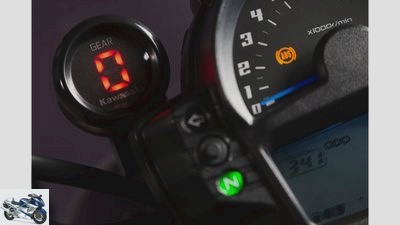
Kawasaki
2/29
Kawasaki Vulcan S.
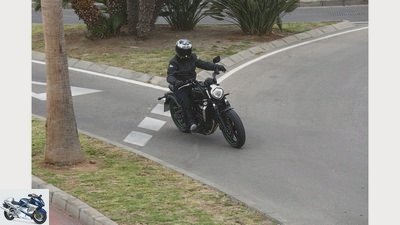
Kawasaki
3/29
Kawasaki Vulcan S.
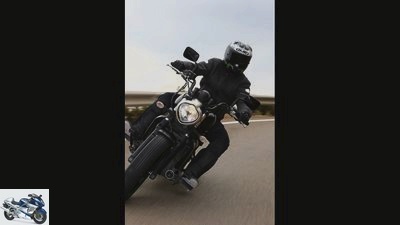
Kawasaki
4/29
Kawasaki Vulcan S.
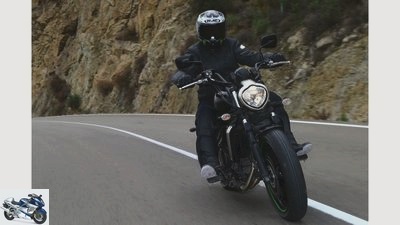
Kawasaki
5/29
Kawasaki Vulcan S.

Kawasaki
6/29
Kawasaki Vulcan S.
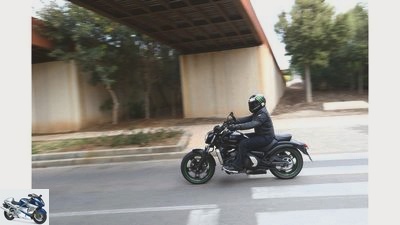
Kawasaki
7/29
Kawasaki Vulcan S.
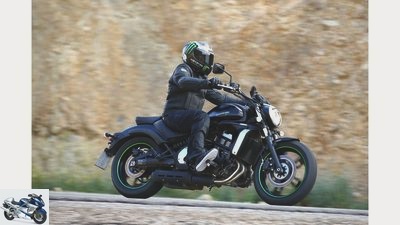
Kawasaki
8/29
Kawasaki Vulcan S.
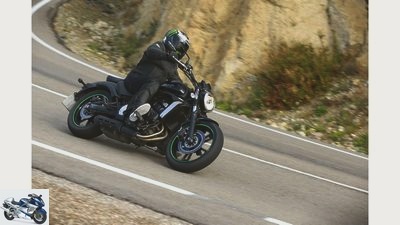
Kawasaki
9/29
Kawasaki Vulcan S.
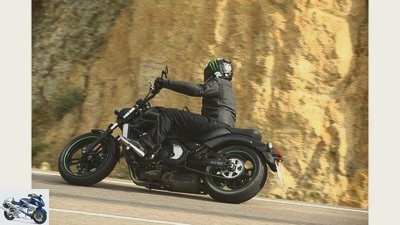
Kawasaki
10/29
Kawasaki Vulcan S.

Kawasaki
11/29
Kawasaki Vulcan S.
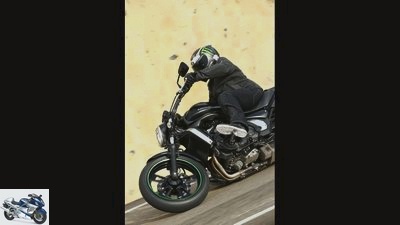
Kawasaki
12/29
Kawasaki Vulcan S.
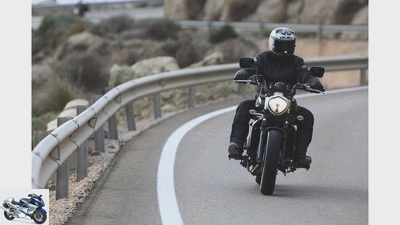
Kawasaki
13/29
Kawasaki Vulcan S.

Kawasaki
14/29
Kawasaki Vulcan S.
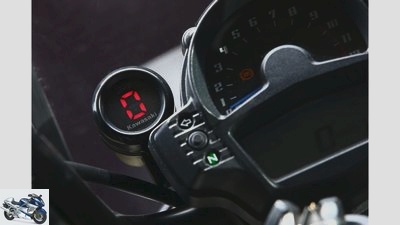
Kawasaki
15/29
Kawasaki Vulcan S.
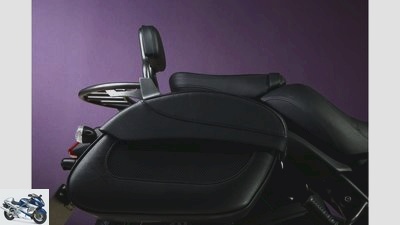
Kawasaki
16/29
Kawasaki Vulcan S.
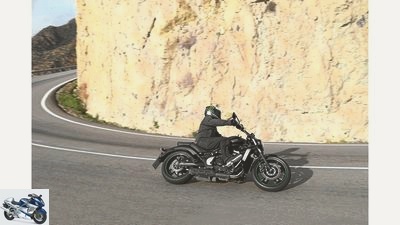
Kawasaki
17/29
The malicious term “driving school motorcycle” essentially refers to very positive character traits.
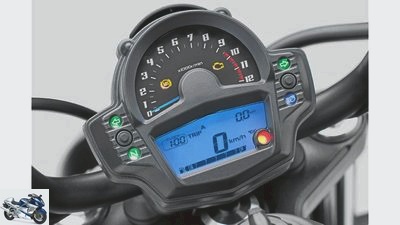
Kawasaki
18/29
Small but mighty: the compact instrument cluster comes from the ER-6 and is very popular.
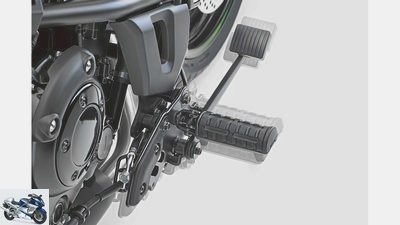
Kawasaki
19/29
Flexible: The footrests can be moved 2.5 cm forwards and backwards, suitable for all pilots.
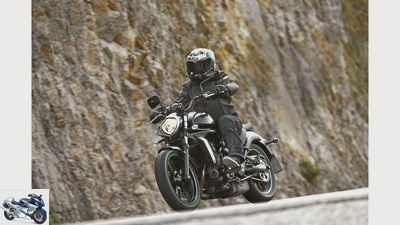
Kawasaki
20/29
Long and low: the proportions of the Vulcan S are typically American, while the design language is typically Japanese.
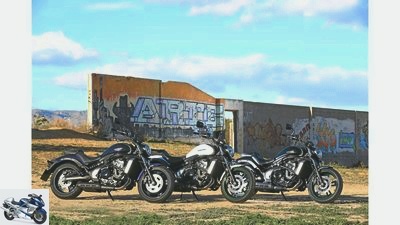
Kawasaki
21/29
Three brothers: Metallic Purple, Pearl Christian White and Flat Ebony are available as color variants. In German: purple, white, black.
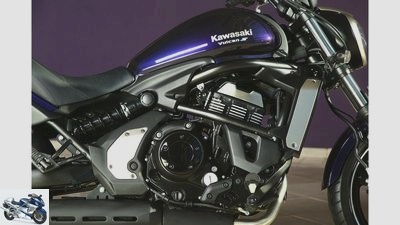
Kawasaki
22/29
Stress-free handling, easy operation and beginner-friendly ergonomics for drivers of all sizes.
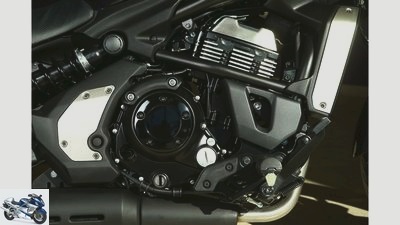
Kawasaki
23/29
The brakes are absolutely foolproof.

Kawasaki
24/29
Kawasaki Vulcan S.
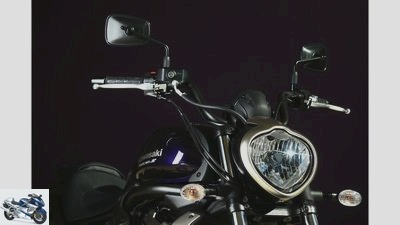
Kawasaki
25/29
Kawasaki Vulcan S.
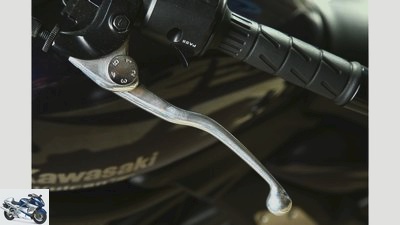
Kawasaki
26/29
Kawasaki Vulcan S.
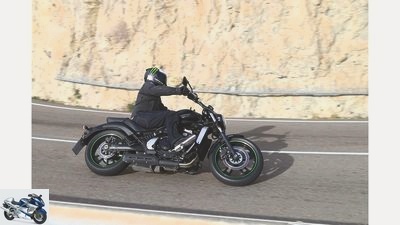
Kawasaki
27/29
Particularly praiseworthy: The function of the Bosch ABS, which does its job very convincingly with fine control intervals.
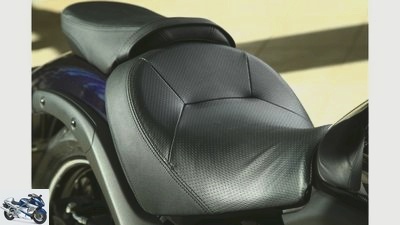
Kawasaki
28/29
Kawasaki Vulcan S.
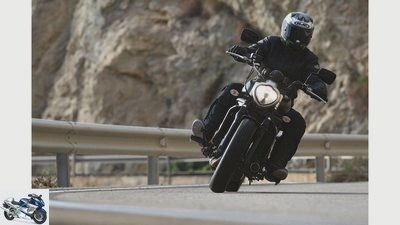
Kawasaki
29/29
Kawasaki Vulcan S.
Kawasaki Vulcan S in the driving report
Uncomplicated and easy for beginners
Entry-level cruisers are not exactly a growing market segment at the moment, but they are definitely a tradition at Kawasaki. With the Kawasaki Vulcan S, the Greens tie in with days long gone. Soon in a driving school near you …
Shit, now it has already slipped out in the introduction, the bad F-word! But joking aside and in all seriousness: The malicious designation “driving school motorcycle” essentially refers to very positive characteristics, namely stress-free handling, ease of use and beginner-friendly ergonomics for drivers of all sizes. These virtues may at best get a shrug of the shoulders at the 200-horsepower elbow grinder regulars table, but outside in the real world they play an important role in the choice of the right pedestal for novice drivers, short stature and all those who just want to ride a motorcycle comfortably and relaxed. We also know that at Kawasaki, and consequently those properties were at the top of the specifications when designing the new ones Kawasaki Vulcan S, which from now on rounds off the Vulcan cruiser family.
Buy complete article
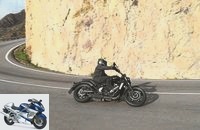
Kawasaki Vulcan S in the driving report
Uncomplicated and easy for beginners
As is typical for cruisers, the Kawasaki Vulcan S are positioned far forward and can be moved forwards or backwards by 2.5 centimeters, whereby the middle position was perfect for the rather compact author at 1.72 meters.
Two “longer” and “shorter” benches are available for an additional charge
Two “longer” and two “shorter” bench seats and handlebars are also available for an extra charge. These place the driver further in front or in the back of the motorcycle so that a suitable seating position can be cobbled together for everyone. Because the brake and clutch levers of the Kawasaki Vulcan S also have a practical adjustment range, the self-imposed requirement of maximum ergonomic comfort can be considered fulfilled.
The drive for the Kawasaki Vulcan S is the tried and tested 649 cubic parallel twin of the ER-6 and Versys models. For the mission in the compact cruiser, this was subjected to the customary conversion measures, received around 30 percent more flywheel mass as well as different camshafts and an adapted mapping for more pressure at low and medium speeds. The eight-valve engine starts its work without any problems even in cool morning temperatures in Almeria, Spain, but tumbles out of the underfloor exhaust for a while with the idle speed increased to 2000 rpm before it regulates itself to around 1100 rpm. The clutch of the Vulcan S is easy to use and easy to adjust, and with a gentle click the first gear of the six-stage, easy and clean gearbox engages.
All articles about the Kawasaki Vulcan S
More neutral and light-footed than almost any other low rider
Right from the start, the twin pleases with good throttle response. Right at the bottom, the engine of the Kawasaki Vulcan S is still a bit unwilling, only runs properly after almost 3000 tours. Between 4500 and 8000 revolutions, the short-stroke engine really does its job and pleases with decent power output (peak power at least 62 hp, 14 more than with its big sister Vulcan 900), smooth running and nice revving. In any case, the engine cannot deny its origin from the lively ER-6, even if it no longer offers the pep of the 11 hp more powerful naked sister right up to the limiter at a lofty 10,000 revs. Although the torque is sufficient even at low speeds for easy rolling, the drive simply feels most comfortable around and above mid-speed, so that you usually stay there.
With the Kawasaki Vulcan S you will look in vain for cruiser booms out of the cellar, but given the organ donor, that was actually clear beforehand. However, this type of perfectly linear power output is firstly beginner-friendly and secondly develops its very own left wing charm in a cruiser. It should also be clear that the acoustic appearance, similar to the ER-6, is very Japanese and decent without any bumps.
Lean angle is adequate
The handling was also untypical for cruisers, but in the best sense of the word. Hardly any other low rider rides as neutral and light-footed as the Kawasaki Vulcan S. With a ready-to-drive 212 kilos (factory specification), the Vulcan was not extraordinarily light, considering the 20 kilos more weight compared to the ER-6, but all the other entry-level cruisers are heavier – and in part significantly. You can also tell from the driving behavior that the kilos are well centralized and well below. The Vulcan S turns in without any significant effort, then goes into and through the curve in a very neutral and fairly stable manner. The lean angle is adequate, beginners can look forward to scraping the first lines into the asphalt after getting used to the big booms.
Routiners then pull in their pines a little and put them down a little further, so soon nothing sets in. The chassis is quite simple, it only offers a seven-way adjustable spring preload at the rear. Sports enthusiasts will criticize the damping front and rear as too weak, but the spring elements respond well and iron out unevenness cleanly, with a little rebound. The Kawasaki Vulcan S cannot be unduly disturbed by bumps in the sloping position, which is why the driving behavior deserves the title “Easy Rider”.
The cockpit also comes from the ER-6
The brakes of the Kawasaki Vulcan S are absolutely foolproof. The two individual discs (300 millimeters at the front, 250 at the rear) are appealing thanks to their gentle grip, good controllability and, if you get right into it, pretty good deceleration. The function of the Bosch ABS is particularly praiseworthy, which does its job very convincingly with fine control intervals.
What else was there? The cockpit also comes from the ER-6 and is pleasing with its large, easy-to-read analog tachometer and all the other information you need. The processing quality is also good, especially the chic stainless steel manifolds make an impression. The radiator bezels and the elegant lamp holder are made of plastic, but they don’t look cheap. In terms of average consumption, the on-board computer of the Kawasaki Vulcan S is believed to be five liters and less when driving quickly. With a tank capacity of 14 liters, this gives a decent range. In addition to the seat and handlebar variants mentioned, a gear indicator, twelve-volt socket, a small and large touring windshield and saddlebags are available as special equipment.
Still more sportsmanship at heart than chopper boom
All in all, the Kawasaki Vulcan S presented itself as a somewhat idiosyncratic, but personable and very sociable cruiser. The drive still carries more sporting spirit than chopper boom in its heart, which in itself fits the rather sporty character of the chassis. In any case, the Vulcan doesn’t have the S in his name without good reason. Anyone who does not value what is commonly referred to as “good vibrations” and is looking for an uncomplicated and beginner-friendly, low cruiser should take a test drive.
In fact, apart from perhaps the Honda CTX 700, there is currently nothing comparable on the market. If it doesn’t necessarily have to be a cruiser, the biggest competition of the Kawasaki Vulcan S should come with the lighter, stronger and cheaper bestseller ER-6 from Kawasaki itself.
Technical data Kawasaki Vulcan S
Kawasaki
All in all, the Kawasaki Vulcan S presented itself as a somewhat idiosyncratic, but personable and very sociable cruiser.
The Vulcan S – a good basis for conversions.
1000PS marketplace app
The Vulcan S – a good basis for conversions.
If you look at the used market, you will quickly realize that the Kawasaki Vulcan S is a good basis for various conversions. But serial Kawasakis can also be found in abundance on the second-hand market, so that you can let your imagination run wild. Here is a price overview: used Kawasaki Vulcan S in Germany.
Related articles
-
SWM Superdual T in the driving report
SWM 13 photos SWM 1/13 SWM Superdual T in the driving report SWM 2/13 Lots of wind protection, plus space for the GPS or road book: Otherwise, the…
-
BMW F 800 R in the driving report
BMW 21st photos BMW 1/21 The new BMW F 800 R in white / blue … BMW 2/21 BMW F 800 R.. BMW 3/21 BMW F 800 R.. BMW 4/21 BMW F 800 R.. BMW 5/21 BMW F 800…
-
Aprilia Shiver 900 hp driving report
Aprilia 9 photos Aprilia 1/9 Aprilia 2/9 Now the Shiver is coming out of the sinking – modernized and with a displacement upgrade. Aprilia 3/9 PS makes…
-
Kawasaki Vulcan S, Honda CTX 700 N and Harley-Davidson Street 750
33 pictures 1/33 Kawasaki Vulcan S. 2/33 Kawasaki: Not chic, but functional. Tachometer good, digital speedometer …
-
Driving report Kawasaki Versys 650
Kawasaki 19th photos Kawasaki 1/19 Kawasaki Versys 650. Kawasaki 2/19 Kawasaki Versys 650. Kawasaki 3/19 Kawasaki Versys 650. Kawasaki 4/19 Kawasaki…
-
Driving report Sachs Roadster 800
Driving report Sachs Roadster 800 Calmly Introduced as a new product line back in 1998, the 800 Sachs Roadster will roll off the assembly line in autumn….
-
BMW R 1200 R in the HP driving report
32 photos 1/32 BMW R 1200 R.. Manufacturer 2/32 BMW R 1200 R.. Manufacturer 3/32 BMW R 1200 R.. 4/32 BMW R 1200…
-
BMW F 850 GS Adventure in the driving report
New items 2019 Top topic BMW 31 photos BMW 1/31 BMW presented the BMW F 850 GS Adventure at EICMA 2018. MOTORRAD was already able to ride the adventure…
-
Kawasaki Z 900 in the driving report
Kawasaki 17 pictures Kawasaki 1/17 Kawasaki Z 900 Kawasaki 2/17 Dipped in bright green, the new tubular steel lattice frame takes the engine as a supporting …
-
Kawasaki Z 650 in the driving report
Kawasaki 9 pictures Kawasaki 1/9 picture gallery: Kawasaki Z 650 in the driving report. Kawasaki 2/9 The diet worked: Compared to the ER-6n, the Z 650 has …